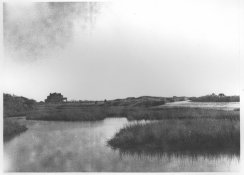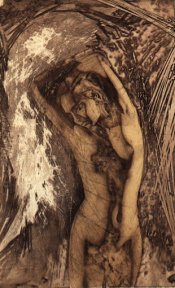Whiteymorange
Subscriber
In searching for a process that will fulfill my need for messy, hands-on work in creating an image that is unique and painterly as well as photographic, I've begun to explore using photopolymer plates printed on an etching press. I posted one of these images and got some very supportive comments in return. I thought I might post a few bits about the process, the materials I've tried and maybe get a group of people who are doing this to chime in with suggestions, critiques, etc. Many others have written of this process and I don't expect that I will be able to add all that much to the fund of info available, but folks asked for details after I posted the first image and I wanted to respond.
(there was a url link here which no longer exists) is one of my first, an image taken on regular film (APX100), enlarged and printed onto Ultrafine Ortho/Litho film in the darkroom. This transparent positive is pretty high-contrast. I then used a "Solarplate", available from various dealers on the web. Mine came from Dan Weldon, but they are also available Dead Link Removed
The other type of plate available at that site is the KM73 plate I have recently purchased and am now working on. The attached image below is from that brand of plate, purchased from Boxcar press. This was exposed through a copy machine transparency made from a print. The tonal range of the final print is not what I hoped, but I'm still working on the best way to get continuous tone. I think it has to do with the stochastic screen I use after I expose the original image. I think this scan proves I've got a lot to learn.
For a look at what I'm trying to do, check out this site by an artist named Susan Voss
(there was a url link here which no longer exists) is one of my first, an image taken on regular film (APX100), enlarged and printed onto Ultrafine Ortho/Litho film in the darkroom. This transparent positive is pretty high-contrast. I then used a "Solarplate", available from various dealers on the web. Mine came from Dan Weldon, but they are also available Dead Link Removed
The other type of plate available at that site is the KM73 plate I have recently purchased and am now working on. The attached image below is from that brand of plate, purchased from Boxcar press. This was exposed through a copy machine transparency made from a print. The tonal range of the final print is not what I hoped, but I'm still working on the best way to get continuous tone. I think it has to do with the stochastic screen I use after I expose the original image. I think this scan proves I've got a lot to learn.
For a look at what I'm trying to do, check out this site by an artist named Susan Voss





